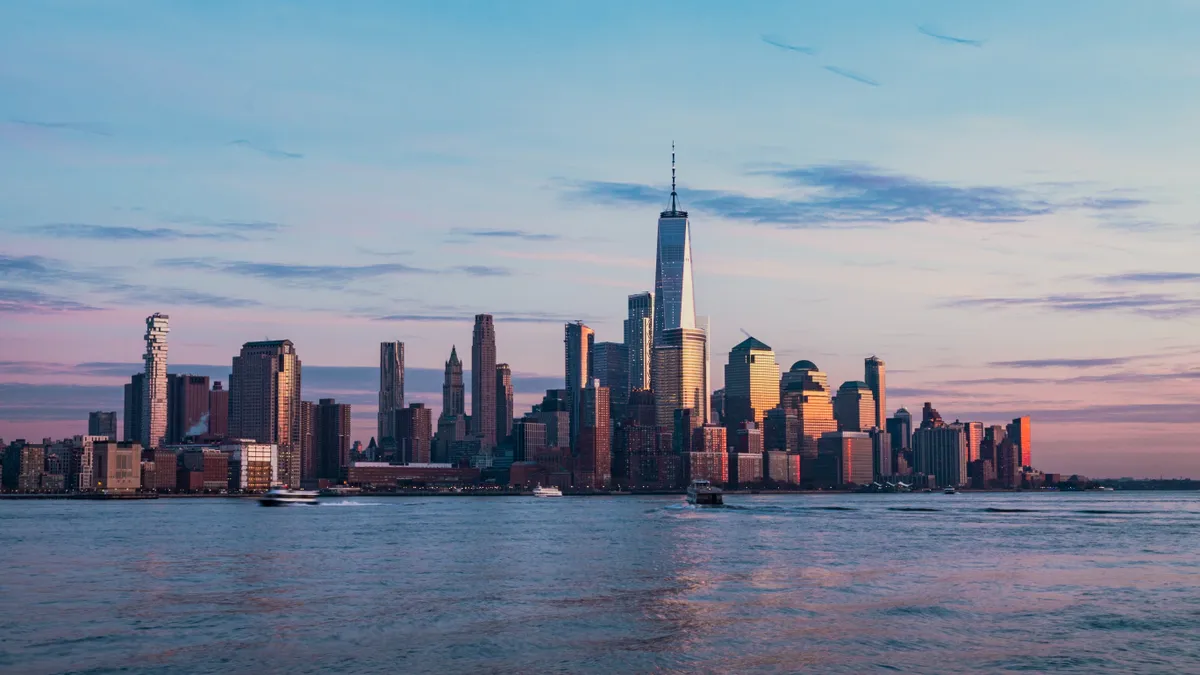Dive Brief:
- Construction spending in New York City, according to the New York Building Congress' latest outlook report, will hit almost $190 billion between 2019 and the end of 2021, indicating that there is no end in sight for the city's current building boom.
- In 2019, spending is expected to reach $61.5 billion, a 10% increase from 2018's $56 billion. The Building Congress also predicts that construction spending will hit $65.9 billion in 2020 and $62.1 billion in 2021. This year, nonresidential spending — i.e. office construction, institutional projects, sports and entertainment space hotels — is expected to reach $21.2 billion, an increase of almost 4% from 2018, and the Metropolitan Transportation Authority's (MTA) outlay for new construction projects will increase by about 9% year over year to $8 billion. The Port Authority of New York and New Jersey will also up its investment in the city's capital projects to $2.1 billion from last year's $1.7 billion.
- The Building Congress also said New York City's 2019's construction employment will increase for the eighth consecutive year and will total 161,000 positions. In 2020 and 2021, however, the number of those working in the city's construction industry is expected to fall to 157,200 and 153,600, respectively.
Dive Insight:
The Building Congress also called on federal and state government officials to step up their investments in the city's infrastructure and transportation systems. Of particular importance to the group is adequate funding of the Gateway Program by President Donald Trump's administration.
The aim of the Amtrak-led program is to replace and update rail infrastructure along a portion of the Northeast Corridor. The aging Hudson River tunnel, which connects New York and New Jersey, sustained severe damage during Superstorm Sandy, and a shutdown of either one of the tunnel's tubes could force a regional economic loss of $100 million per day. However, the Trump administration has thus far refused to fund the now-$11.3 billion tunnel project.
Another priority for the Building Congress is that the state continues its investment into MTA and Port Authority projects.
In September, the MTA introduced its 2020-2024 Capital Plan along with a record-breaking $51.5 billion budget. The program, which represents a 70% increase in current spending levels, would see investment in the region's subways, buses and rail networks.
In the report, Building Congress officials also:
- Appealed to both the public and private sectors to increase their adoption of construction technology, like drones and 3D printing, and new building methods like modular in order to speed up project delivery.
- Suggested that the industry focus on support and training in order to develop a deep bench of future construction professionals and leaders.
- Advocated for more women- and minority-focused programs that would better ensure diversity and inclusion.
- Pushed for officials to make the city's infrastructure more resilient to the effects of climate change.
While New York City seems to be maintaining a booming pace of construction activity, there are some indications that the overall U.S. industry could be in store for a slowdown.
Experts have pointed to bellwethers like decreases in architectural billings, which serve as an indicator of future construction activity, and slightly slower pace of employment growth as signs that a retraction is on the way, but there are also other metro areas, such as Columbus, Ohio, that have plenty of construction work ahead to support a population increase and new industries. Backlogs are still strong, although some forecasters have suggested that many projects have stalled because there aren't enough skilled workers to start on them.
Nevertheless, contractors are optimistic about how their businesses will fare for the next year to 18 months and are anticipating increased sales and profits as well as an uptick in hiring.












